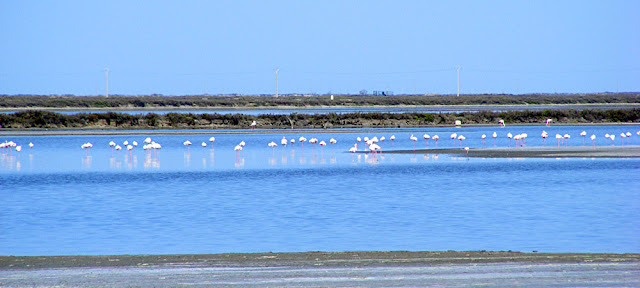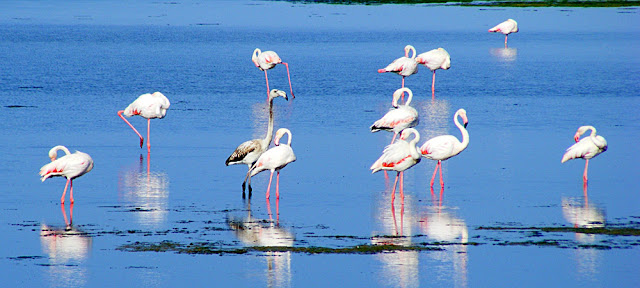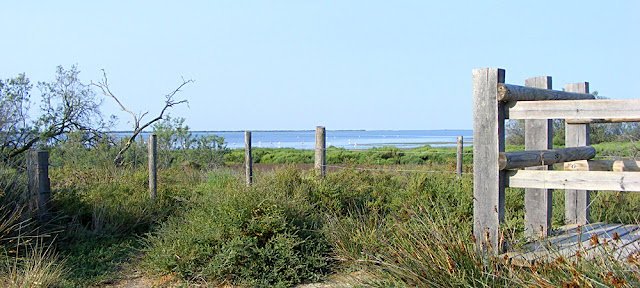Top of my list to see when we stayed in Arles in June this year was to see flamingoes in the Camargue.
The Camargue is France's largest wetland, formed by the delta of the Rhone river emptying into the Mediterranean. About 60,000 Greater Flamingoes call this briny land home.
In French they are called Flamants roses, and are one of 400 species of bird that can be observed in the Camargue (three-quarters of all the species recorded for France). The biggest colony in the western Mediterranean has nested on an island in the Camargue since the 1970s. The site used to be owned by the big salt producer the Compagnie des Salins du Midi but is now a big nature reserve. There are around 15,000 nesting pairs and visits to the site are strictly controlled so as not to disturb the birds. The tourist office has produced this handy guide: https://www.arlestourisme.com/fr/assets/pdf/pdfs_document/N9_circuit_flamants_roses_sel.pdf
The Greater Flamingo is the largest and most widely distributed flamingo species, being present in parts of Africa, Asia and southern Europe. There are only about 30 major breeding sites in the world. The global population is estimated at 500,000, and that in Europe at about 90,000.
They are a pale pink with only their wings having strong pink colour. Young flamingoes are grey until their second year. They eat tiny crustaceans which give them their pink colouring, but also molluscs, insects, algae, worms, fish (and their eggs) and seeds. They feed by sifting water through their beak, a bit like a baleine whale.
Flamingoes can easily live until they are 30 years old in the wild, and don't start to breed until they are three or four years old.
They are not difficult to spot if you are driving about in the Camargue. We got up early and saw our first ones flying over from their roosting grounds to their feeding grounds. By 9:30 in the morning we had dozens of photos of flamingoes, mainly from the side of the road at various points beside the Etang de Vaccares (the largest of the saline lagoons).








No comments:
Post a Comment